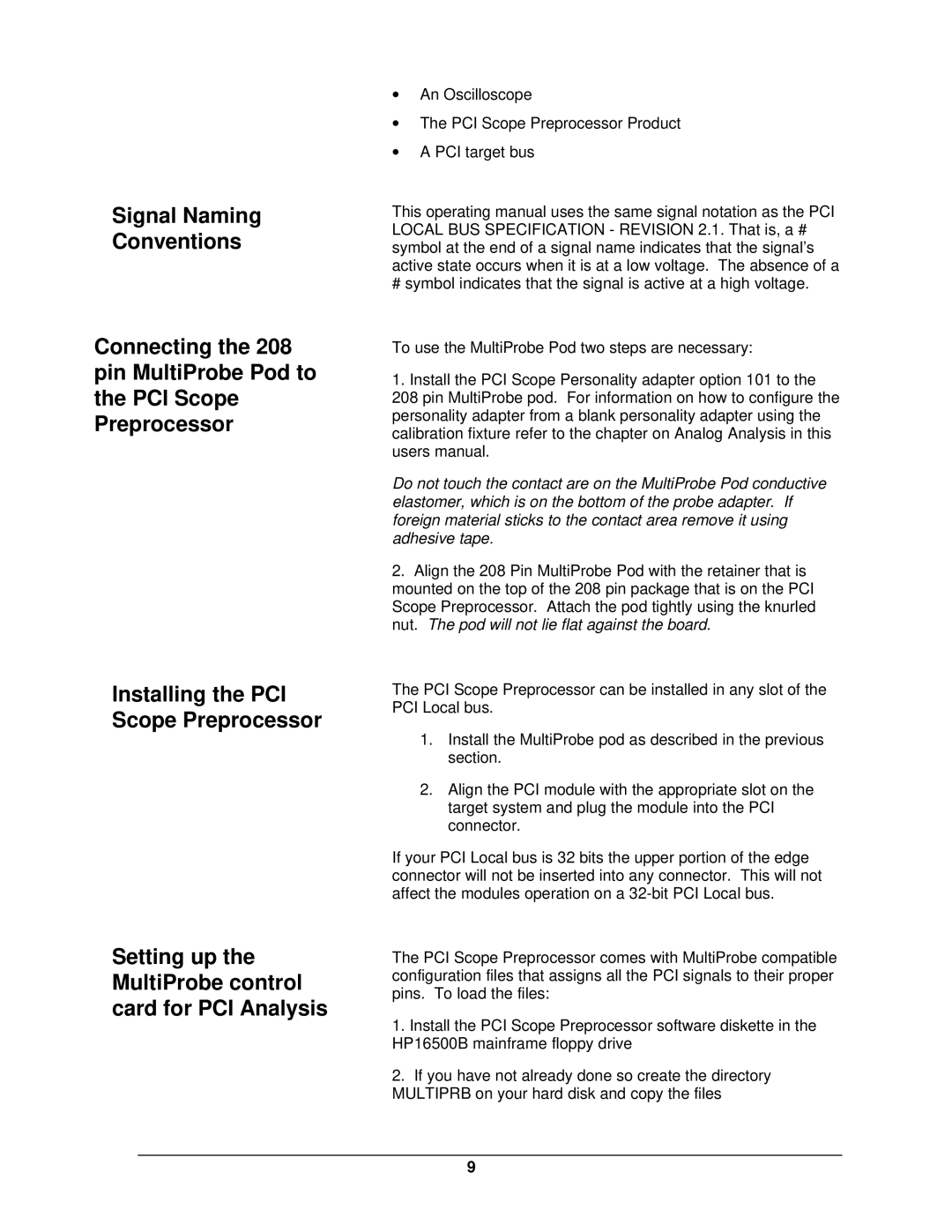Signal Naming
Conventions
Connecting the 208 pin MultiProbe Pod to the PCI Scope Preprocessor
Installing the PCI Scope Preprocessor
Setting up the MultiProbe control card for PCI Analysis
∙An Oscilloscope
∙The PCI Scope Preprocessor Product
∙A PCI target bus
This operating manual uses the same signal notation as the PCI LOCAL BUS SPECIFICATION - REVISION 2.1. That is, a # symbol at the end of a signal name indicates that the signal’s active state occurs when it is at a low voltage. The absence of a
# symbol indicates that the signal is active at a high voltage.
To use the MultiProbe Pod two steps are necessary:
1.Install the PCI Scope Personality adapter option 101 to the
208pin MultiProbe pod. For information on how to configure the personality adapter from a blank personality adapter using the calibration fixture refer to the chapter on Analog Analysis in this users manual.
Do not touch the contact are on the MultiProbe Pod conductive elastomer, which is on the bottom of the probe adapter. If foreign material sticks to the contact area remove it using adhesive tape.
2.Align the 208 Pin MultiProbe Pod with the retainer that is mounted on the top of the 208 pin package that is on the PCI Scope Preprocessor. Attach the pod tightly using the knurled nut. The pod will not lie flat against the board.
The PCI Scope Preprocessor can be installed in any slot of the PCI Local bus.
1.Install the MultiProbe pod as described in the previous section.
2.Align the PCI module with the appropriate slot on the target system and plug the module into the PCI connector.
If your PCI Local bus is 32 bits the upper portion of the edge connector will not be inserted into any connector. This will not affect the modules operation on a
The PCI Scope Preprocessor comes with MultiProbe compatible configuration files that assigns all the PCI signals to their proper pins. To load the files:
1.Install the PCI Scope Preprocessor software diskette in the HP16500B mainframe floppy drive
2.If you have not already done so create the directory MULTIPRB on your hard disk and copy the files
9
